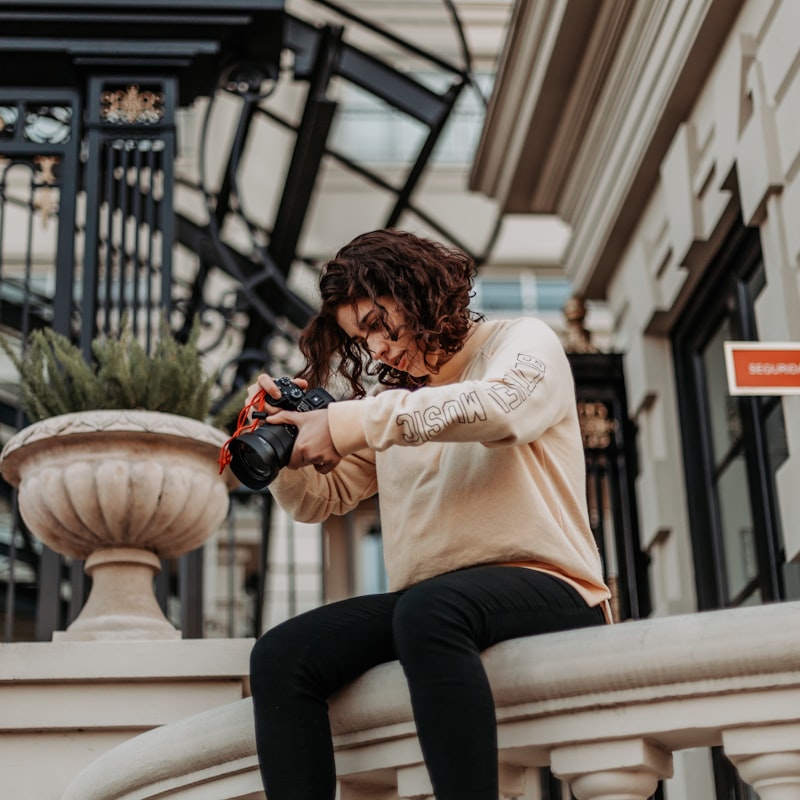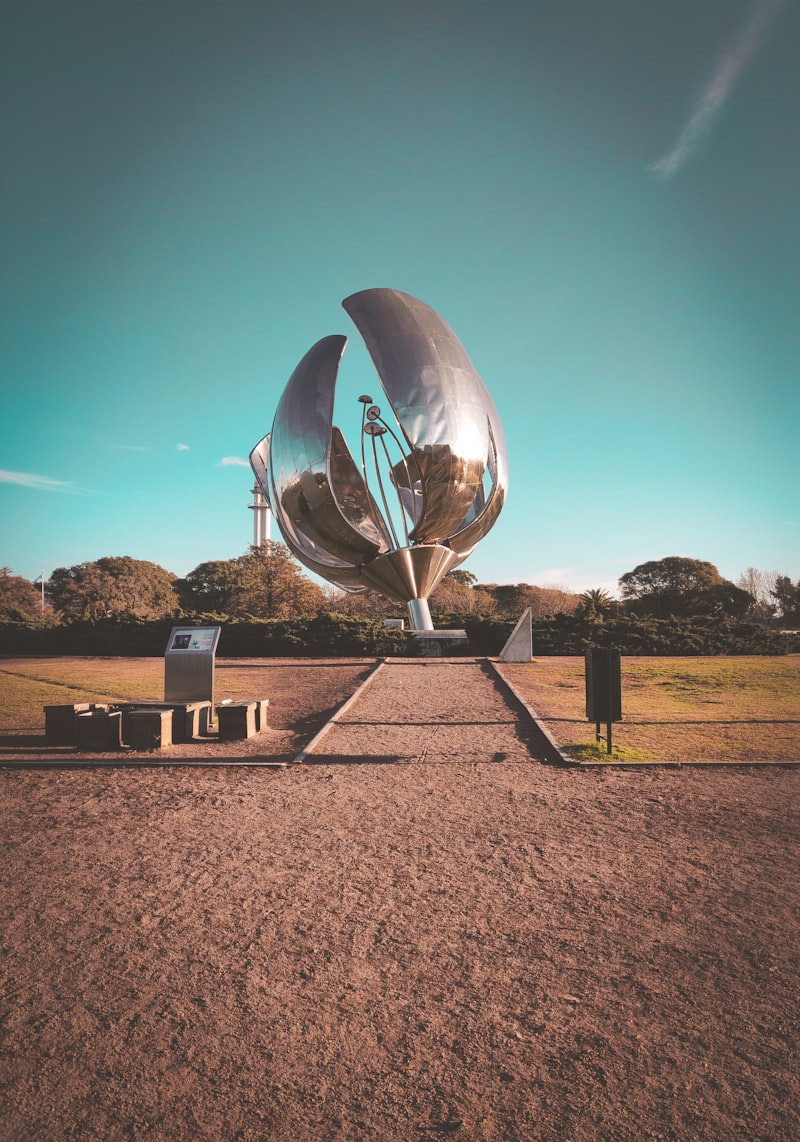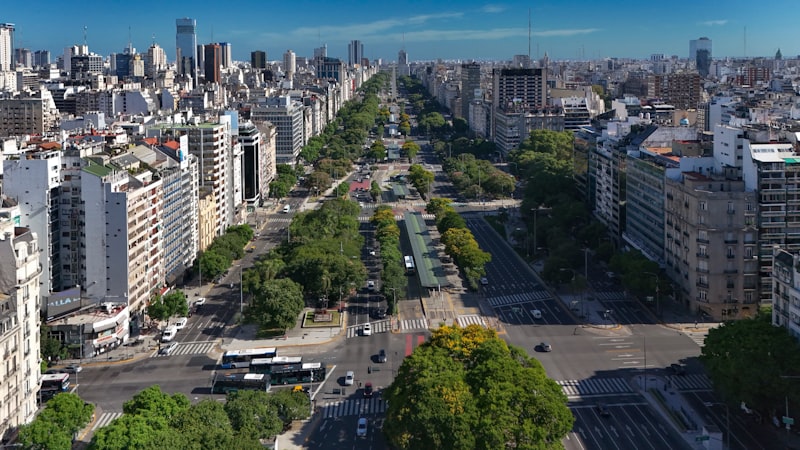One of the most iconic symbols of Buenos Aires is its tango culture. The city is renowned as the birthplace of tango, a passionate dance that embodies the soul of Argentina. Visitors can immerse themselves in tango shows held in intimate milongas (dance halls) or even take tango lessons to feel the rhythm and grace firsthand. The dance isn’t just a series of steps; it’s an expression of Argentine passion and history.
Moving from dance to art, Buenos Aires boasts an impressive array of museums and galleries. The Museo Nacional de Bellas Artes houses an extensive collection of Argentine art spanning centuries, including works by renowned artists such as Benito Quinquela Martín and Xul Solar. For contemporary art enthusiasts, the MALBA (Museo de Arte Latinoamericano de Buenos Aires) offers a stunning collection of modern Latin American art, featuring pieces by Frida Kahlo, Diego Rivera, and more.
Stepping into the neighborhoods of Buenos Aires reveals its diverse cultural heritage. La Boca, with its colorful houses and bustling street art, is a testament to the city’s immigrant history and artistic flair. Meanwhile, Recoleta exudes elegance with its upscale boutiques, cafes, and the famous Recoleta Cemetery, where the graves of Eva Perón and other notable figures rest.
No exploration of Buenos Aires is complete without savoring its culinary delights. From juicy Argentine steaks served in traditional parrillas (steakhouses) to empanadas bursting with savory fillings, the city offers a gastronomic journey that reflects its multicultural influences.
In essence, Buenos Aires is a city that invites you to indulge in its cultural wonders, from dance and art to history and cuisine. Each corner tells a story, each experience leaves an impression, making Buenos Aires a destination that captivates the soul of every traveler who ventures here.
Exploring Tango’s Heart: Iconic Dance Halls in Buenos Aires
Buenos Aires pulses with the rhythm of tango, a dance that embodies passion and history. As you step into the iconic dance halls scattered across this vibrant city, you’re not just witnessing a dance; you’re diving into a cultural phenomenon that resonates through Argentinean streets. Each dance hall, known as a milonga, holds its own story and charm, inviting both locals and visitors to sway to the mesmerizing tunes of tango.
Picture yourself entering Confitería Ideal, a time-honored milonga where the echoes of tango legends still reverberate through its grand halls. Here, the elegance of the past meets the energy of the present, as dancers glide across the floor with grace and fervor. It’s not just about the steps; it’s about the connection between partners and the shared history that transcends time.
In La Viruta, a more modern twist awaits as young enthusiasts gather to learn and dance. The atmosphere is electric, with live music fueling the night and instructors guiding newcomers through the intricate moves of this passionate dance. It’s a place where the old and new converge, preserving tradition while embracing innovation.
Venture into El Beso, where the intensity of tango reaches its peak. Here, seasoned dancers come to showcase their skills, creating a spectacle that captivates all who watch. The ambiance is intimate yet powerful, drawing you into the heart of Buenos Aires’ tango culture.

Exploring these iconic dance halls isn’t just about witnessing a dance; it’s about immersing yourself in a cultural legacy that continues to evolve. Whether you’re a seasoned dancer or a curious traveler, Buenos Aires’ milongas promise an unforgettable experience where every step tells a story of passion, history, and the soul of tango.
Art Lover’s Guide: Must-Visit Museums in Buenos Aires
First up on our art lover’s itinerary is the Museo Nacional de Bellas Artes. Situated in the heart of Buenos Aires, this museum boasts an impressive collection of Argentine and international art spanning centuries. From classical European paintings to avant-garde Latin American sculptures, the Museo Nacional de Bellas Artes offers a comprehensive look into the evolution of art through the ages.

Next, we move to the Museo de Arte Latinoamericano de Buenos Aires (MALBA). Known for its striking modern architecture, MALBA houses a remarkable collection of contemporary Latin American art. It’s a haven for those who appreciate bold expressions and innovative forms of artistic expression. As you wander through its galleries, you’ll encounter works by iconic figures like Frida Kahlo and Diego Rivera, alongside lesser-known yet equally impactful artists shaping the modern art landscape.
For a taste of history intertwined with art, make your way to the Museo Histórico Nacional. While primarily a historical museum, it houses fascinating exhibits that showcase the artistic heritage of Argentina. From colonial-era paintings depicting life in Buenos Aires to intricate indigenous crafts, this museum provides a unique perspective on how art has evolved alongside the nation’s history.
Venturing further into the city, art aficionados shouldn’t miss the Museo Evita. Dedicated to the life and legacy of Eva Perón, this museum not only commemorates a significant political figure but also celebrates the cultural impact she had on Argentine society. Through photographs, films, and personal belongings, the Museo Evita offers a poignant glimpse into both the political and artistic realms of 20th-century Argentina.
Last but certainly not least, we arrive at the Museo Nacional de Arte Decorativo. Nestled in a stunning French-style mansion, this museum is a treasure trove of decorative arts from around the world. From exquisite furniture to luxurious tapestries, every corner of this museum exudes elegance and craftsmanship, making it a must-visit for those with a keen eye for beauty beyond traditional paintings and sculptures.
Buenos Aires is a city where art permeates every corner, from its grand museums to its vibrant streets. Whether you’re drawn to classical masterpieces or contemporary innovations, these museums promise to enrich your understanding and appreciation of art in all its forms.
Beyond Evita: Uncovering Buenos Aires’ Political History
At its core, Buenos Aires is a city that breathes politics. From the early days of colonization to the present, its streets have echoed with the footsteps of leaders and revolutionaries alike. The Casa Rosada, with its distinctive pink façade, stands as a poignant symbol of power and political legacy. It’s here where pivotal decisions have shaped Argentina’s destiny, from times of prosperity to periods of tumultuous change.
The city’s political narrative is a tale of contrasts, where grand boulevards like Avenida 9 de Julio, adorned with towering monuments, intersect with neighborhoods bearing the scars of political unrest. Each corner tells a story: from the Plaza de Mayo, where mothers once gathered in silent protest, to the vibrant La Boca district, where political murals adorn the streets.
But beyond the visible landmarks lie deeper layers of Buenos Aires’ political history. It’s a history marked by ideologies that have shaped generations and stirred passions. The Peronist movement, synonymous with Evita and Juan Perón, remains a cornerstone of Argentine politics, influencing policies and shaping public discourse.
Exploring Buenos Aires means immersing oneself in its political narrative—a journey through triumphs and tribulations, resilience and revolution. It’s a city where politics isn’t just a topic of discussion but a way of life—a rhythm that beats in sync with its tango-filled nights and cafe-lined streets.
Gastronomic Delights: Food Tours through Buenos Aires’ Barrios
Embark on a culinary adventure through the vibrant barrios of Buenos Aires, where gastronomic delights await at every corner. Buenos Aires is not just a city; it’s a culinary paradise brimming with diverse flavors and cultural influences. From the bustling streets of San Telmo to the chic avenues of Palermo, each barrio offers a unique taste of Argentine cuisine.
In San Telmo, the oldest barrio in Buenos Aires, cobblestone streets lead you to traditional parrillas (steakhouses) and quaint cafes serving empanadas bursting with savory fillings. As you savor the tender cuts of Argentine beef paired with a glass of Malbec, you’ll feel the heartbeat of Buenos Aires’s food culture.
Venture into Palermo, known for its trendy vibe and eclectic dining scene. Here, fusion restaurants blend Argentine flavors with international influences, offering everything from gourmet street food to avant-garde tasting menus. Dive into a milanesa sandwich or indulge in alfajores, Argentina’s beloved sweet treat, as you explore the leafy streets adorned with street art and boutiques.
In Recoleta, sophistication meets tradition as you dine in elegant cafes and historic eateries. Sample medialunas (croissants) with dulce de leche for breakfast or enjoy a traditional Argentine asado (barbecue) in a charming plaza. Recoleta’s culinary offerings reflect its rich history and cultural heritage, making it a must-visit for food enthusiasts.

No culinary journey through Buenos Aires would be complete without visiting La Boca, where tango rhythms and vibrant colors set the stage for memorable dining experiences. Dive into a seafood paella or try locro, a hearty stew enjoyed during Argentina’s national holidays, amidst the lively atmosphere of Caminito street.
Whether you’re a food lover or simply curious about Argentine cuisine, Buenos Aires’s barrios offer a feast for the senses. Each neighborhood tells a story through its food, blending flavors, and traditions into a culinary tapestry that captivates visitors from around the world. Join a food tour through Buenos Aires’s barrios and discover why this city is a gastronomic capital like no other.
This article highlights the unique culinary experiences available in different neighborhoods (barrios) of Buenos Aires, using engaging descriptions and inviting the reader to explore the diverse flavors of Argentine cuisine.
Frequently Asked Questions
What are the must-visit museums in Buenos Aires?
Discover the essential museums of Buenos Aires with our guide to must-visit cultural destinations in the city. Explore renowned institutions showcasing Argentine art, history, and culture, offering enriching experiences for every visitor.
What are some iconic landmarks to visit for cultural immersion in Buenos Aires?
Discover Buenos Aires’ cultural essence by visiting iconic landmarks like the Recoleta Cemetery, where Eva Perón is buried, and the Teatro Colón, renowned for its opera performances. Explore the historic Plaza de Mayo, a focal point of Argentine history and politics. Don’t miss La Boca neighborhood with its colorful Caminito street, showcasing tango culture and local artistry.
What are the top cultural festivals and events in Buenos Aires?
Discover the top cultural festivals and events in Buenos Aires with our concise guide. Explore vibrant celebrations showcasing tango, music, dance, and art that highlight the rich cultural tapestry of Argentina’s capital.
How can I explore Buenos Aires’ historic neighborhoods?
Discovering Buenos Aires’ historic neighborhoods involves exploring iconic areas like San Telmo and La Boca, known for their rich cultural heritage and vibrant street life. Wander through cobblestone streets, visit historic landmarks such as Plaza de Mayo, and experience local cuisine and tango music in traditional cafes and milongas.
Where can I experience traditional tango shows in Buenos Aires?
Discover where to experience traditional tango shows in Buenos Aires with our concise guide. Explore iconic venues and authentic experiences that showcase the essence of Argentine tango culture.


